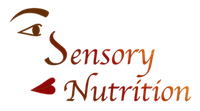Earlier this month, we mentioned in our December 2012 Potpourri blog post that an iPhone app was coming for the Low FODMAP Diet. That diet approach has come out of research work done at Monash University in Melbourne, Australia (designed to help manage gastrointestinal symptoms). On 17DEC2012, the researchers at Monash University in Australia sent out a press release about their new app called the Monash University Low FODMAP Diet (by CEMA, Monash University) which can be found in the iTunes Store. Graphic source: Dreamstime.com
Month: December 2012
Fearless Holiday Baking With Yeast Part 2 of 2
In Part 1 of 2 of our series on baking with yeast, we mentioned a bit about the history of baker’s yeast and some details concerning fresh yeast and active dry yeast. In this Part 2 of 2 of our baking with yeast series, we’ll discuss how to “proof” or “bloom” active dry yeast prior to incorporating it into recipes, as well as the various offerings under the category of instant dry yeast and some pointers when it comes to using it. Also feel free to check out our accompanying picture-based recipe blog post on how to make G’s Heavenly Cinnamon Rolls.
Fearless Holiday Baking With Yeast Part 1 of 2
Are you a seasoned home baker who doesn’t hesitate to work with yeast dough, or does the thought of working with baker’s yeast make you nervous? Have you ever wished you knew more about yeast baking so that you would always be successful in working with any form of baker’s yeast sold to consumers? Have you ever wished you could get some yeast risings to go a bit faster to save some time making a recipe from start to finish? Have you ever wondered about the differences between fresh yeast, active dry yeast, and instant dry yeast? We’d love to
Holiday Yeast Baking: G’s Heavenly Cinnamon Rolls
G’s Heavenly Cinnamon Rolls recipe was adapted from other cinnamon rolls recipes by our webmaster to have a more heathful profile overall for baking a yeast-based cinnamon roll. Each 3+” diameter cinnamon roll from the adapted recipe features an overall lower fat and lower saturated fat content than other typical cinnamon rolls, features applesauce as a replacement for fat in the actual dough, is higher in whole grain content through the use of some* white whole wheat flour to replace some of the all-purpose unbleached flour, is lower in overall sugars, yet when iced still offers the appeal of those
Healthful Holidays–Christmas Tea Anyone? Part 3 of 3
Why not grab a cup of fragrant not-too-hot tea and we’ll wrap up this blog series on Christmas tea and how it can contribute to helping you and yours to stay healthier during the holidays. We’ve already mentioned in Part 1 of this series how tea can contribute valuable flavonoids to your diet, and then in Part 2 of this series shared some thoughts concerning brewing tea and its caffeine content as well. Now we’d like to share some other potential health benefits of drinking a not-too-hot cup of freshly steeped tea and mention just some of the supermarket accessible brands of
Read MoreHealthful Holidays–Christmas Tea Anyone? Part 3 of 3
Healthful Holidays–Christmas Tea Anyone? Part 2 of 3
It’s easy to get caught up in the hustle and bustle of the holiday season and inadvertently forget about setting aside time to help keep yourself healthier during the holidays. Sometimes you need to just stop, catch your breath, and maybe even sit down and treat yourself to a wonderfully aromatic warm cup of tea! It’s important to keep up your antioxidant intake during the winter months and as we noted in Part 1 of 3 of this blog series, especially green and/or black tea made from the tea leaves of the Camellia senesis plant can be an excellent source of important
Read MoreHealthful Holidays–Christmas Tea Anyone? Part 2 of 3
Healthful Holidays–Christmas Tea Anyone? Part 1 of 3
Are you a tea drinker? As of the year 2010, the Tea Association of the USA estimated that there are at least 154 million people in the US who drink some form of tea. If their 2010 Tea Fact Sheet still holds true, then in effect before the year ends approximately 1 out of every 2 persons in the US will have consumed some form of tea this year. (Image of Christmas Tree + ornaments courtesy of dyet at rgbstock.com) In Part 1 of this 3 part series we’ll review a little background on tea and tea events, and mention
Read MoreHealthful Holidays–Christmas Tea Anyone? Part 1 of 3
December 2012 Potpourri: Food Safety App.; CeliacNow site; FODMAPs update
Food Safety App Holiday time is a busy time for everyone. It is easy to get so caught up in the hustle and bustle of the season that one can lose track of time and/or could easily forget some critical aspects of proper food handling. Staying on top of food safety awareness can mean the difference between a Happy Holiday or running the risk of needless food poisoning that could have been avoided. (Photo of fresh, whole, skin-on, bone-in, unbrined, plain, raw 6.63 pound turkey breast ready for oven roasting shown prior to adding any herbs and/or spices, basting, etc.
Read MoreDecember 2012 Potpourri: Food Safety App.; CeliacNow site; FODMAPs update

